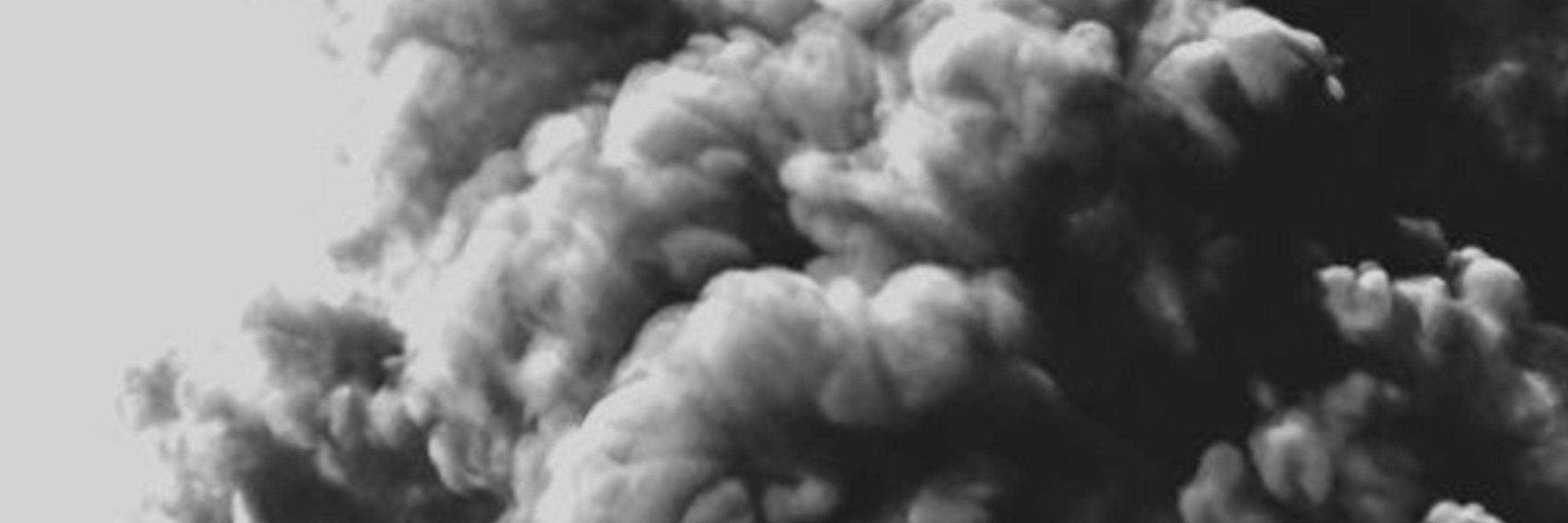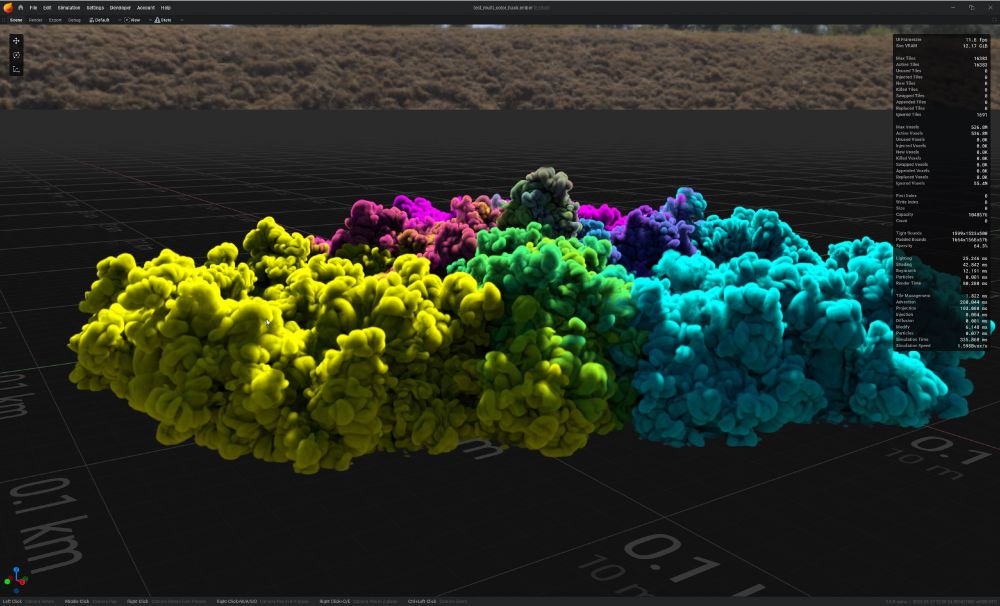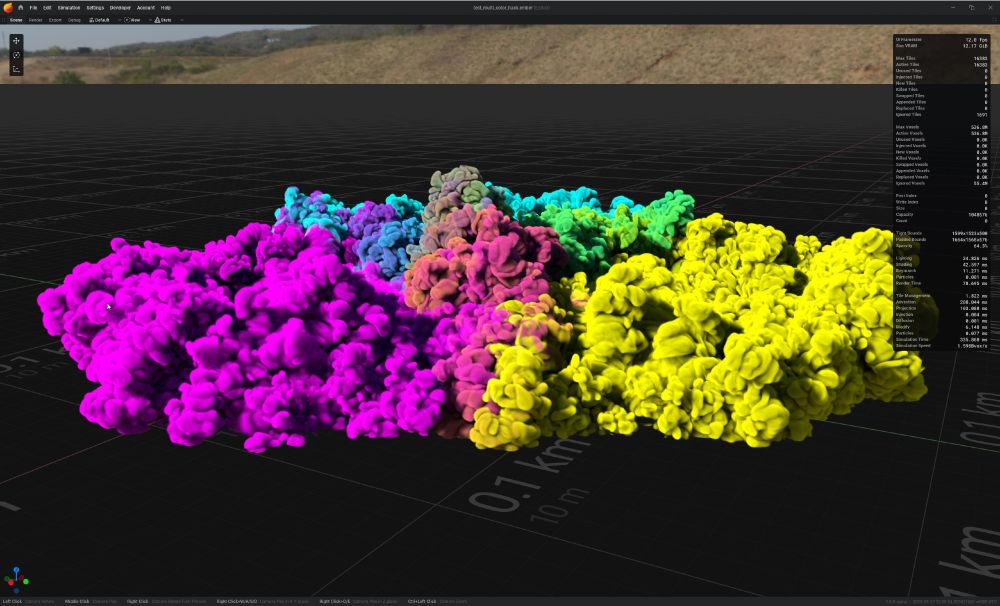
Working on EmberGen and more.
Discord: vassvik @[email protected]

Colorado by number of splines that pass the culling.
Colors are (R, G, B, Y, M, C, W) = (1, 2, 3, 4 ,5, 6, >=7), respectively.
First image uses the outer circle, second image uses the purple region.


Colorado by number of splines that pass the culling.
Colors are (R, G, B, Y, M, C, W) = (1, 2, 3, 4 ,5, 6, >=7), respectively.
First image uses the outer circle, second image uses the purple region.

Ordering is a bit wonky, because I wanted the colors to compose in a certain way, but it works because Desmos isn't evaluating the expressions in order.

Ordering is a bit wonky, because I wanted the colors to compose in a certain way, but it works because Desmos isn't evaluating the expressions in order.
Realtime capture in the viewport on 4090.
The projection struggles a bit on this scale, so I brute forced it a bit, so it's a bit slower than it has to be. FMG to initialize should help a lot here.
Realtime capture in the viewport on 4090.
The projection struggles a bit on this scale, so I brute forced it a bit, so it's a bit slower than it has to be. FMG to initialize should help a lot here.
1664x1568x576 bounding box, 536M active voxels. Roughly 65% sparsity.




1664x1568x576 bounding box, 536M active voxels. Roughly 65% sparsity.
Left: RGB blending
Right: Mixbox blending
Interestingly I there's a lot to take from this for smoke scattering, which generally has an absorption component, so subtractive color mixing makes sense I think?
Left: RGB blending
Right: Mixbox blending
Interestingly I there's a lot to take from this for smoke scattering, which generally has an absorption component, so subtractive color mixing makes sense I think?


In fact It's always possible to map from one variant to another by appropriately adjusting the scaling constant

In fact It's always possible to map from one variant to another by appropriately adjusting the scaling constant














